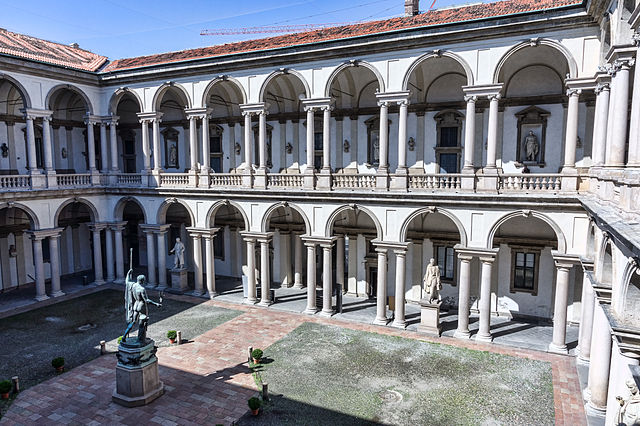Neoclassical architecture in Milan
Neoclassical architecture in Milan encompasses the main artistic movement from about 1750 to 1850 in this northern Italian city. From the final years of the reign of Maria Theresa of Austria, through the Napoleonic Kingdom of Italy and the European Restoration, Milan was in the forefront of a strong cultural and economic renaissance in which Neoclassicism was the dominant style, creating in Milan some of the most influential works in this style in Italy and across Europe. Notable developments include construction of the Teatro alla Scala, the restyled Royal Palace, and the Brera institutions including the Academy of Fine Arts, the Braidense Library and the Brera Astronomical Observatory. Neoclassicism also led to the development of monumental city gates, new squares and boulevards, as well as public gardens and private mansions. Latterly, two churches, San Tomaso in Terramara and San Carlo al Corso, were completed in Neoclassical style before the period came to an end in the late 1830s.

Arco della Pace, completed 1816
Neoclassical medallion of Cesare Beccaria at the Palazzo Brentani
Square outside San Carlo al Corso
Maria Teresa, initiator of Milan's era of Enlightenment and Neoclassicism
The Biblioteca Nazionale Braidense or Braidense National Library, usually known as the Biblioteca di Brera, is a public library in Milan, in northern Italy. It is one of the largest libraries in Italy. Initially, it contained large historical and scientific collections before it was charged with the legal deposit of all publications from Milan. Since 1880, it has had the status of a national library and is today one of the 47 Italian State libraries.
The Maria Teresa Hall of the Braidense Library
Milan's Palazzo di Brera which houses the Braidense Library






